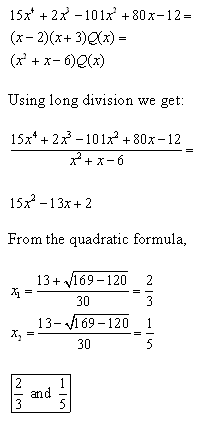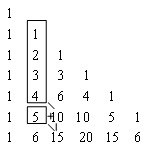Solutions to other tests:
| 1 2 3 4 5 6 7 8 9 10 11 12 13 14 15 16 17 |
Mathematics for the Digital Age
and
Programming in Python
>>> Second Edition
Test 12
|
|
- 21.
def stretchPolynomial(p, k): t = 1 i = len(p) - 1 while i >= 0: p[i] *= t t *= k i -= 1 Or:def stretchPolynomial(p, k): n = len(p) - 1 for i in range(n): p[i] *= k**(n-i) - 22.
def divideByX(p): return (p[:-1], p[-1]) - 23.

- 24.
- (a)

(b)

- 25.
def derivative(p): n = len(p) - 1 i = 0 while n > 0: p[i] *= n n -= 1 i += 1 return p[:-1] - 26.
- The sum of the numbers in a column is equal to the
number in the next row diagonally to the right.
This is true for the first row: 1 = 1.
If this is true for the n-th row, it must be true
for the (n+1)-th row, too, because in the triangle
each number is equal to the sum of the two numbers in the previous
row: the one above and the one diagonally to the left:
